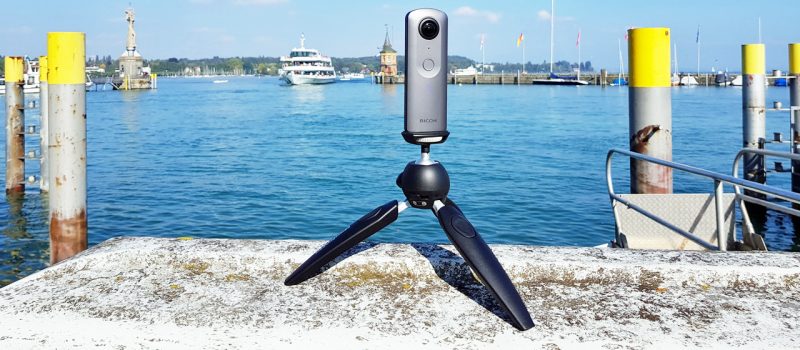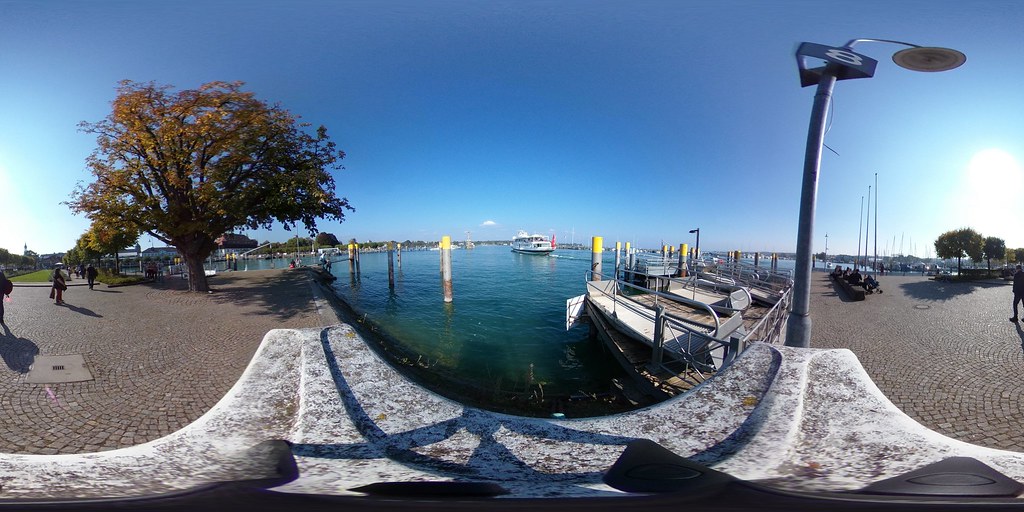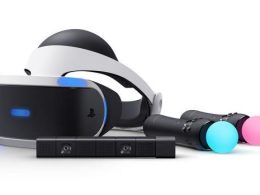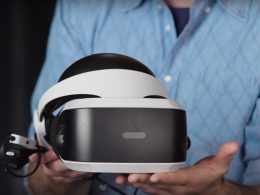If you hear a funny, high-pitched "poof" sound at tech events, it's someone with a Ricoh 360-degree camera. Not without reason: the internationally active company's full-spherical cameras seem to enjoy a certain popularity among journalists and bloggers. This is probably mainly due to the good image quality, which was already at a high level with the predecessor, the Ricoh Theta S. I couldn't get used to the mediocre video quality back then. However, this has now improved thanks to 4K support and more processing power. From the outside, the Ricoh Theta V looks almost exactly like its predecessor, apart from the slightly shiny plastic. The control buttons are also reminiscent of the Theta S model. What else is new?
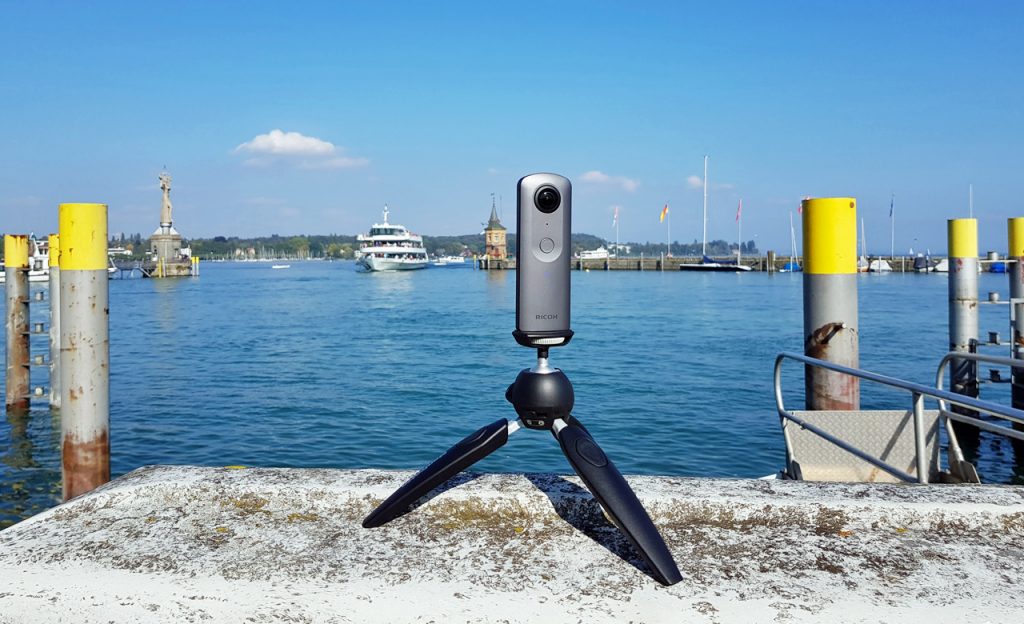
360-degree audio and more processing power
The biggest improvement of the Ricoh Theta V is the performance boost of the Qualcomm Snapdragon 625 processor. Thanks to the ten times faster processing power, photos from the front and rear lenses are stitched together in less time and also transferred more quickly to the smartphone. In addition, videos can now be recorded in 4K resolution (3840 x 1920 px) at 30 frames per second. (The Theta S was only capable of Full HD.)
The VR gadget can also boast a 4-channel surround sound microphone. This is certainly a nice addition, as disturbing ambient noises from weather effects such as wind and the voices of several people speaking could often be drowned out by the previous built-in microphones. This has now actually improved a little with the Ricoh Theta V. However, I still need to gather a few more experiences.
Good VR quality
I looked at the photos and videos on Samsung's Gear VR and uploaded to various social networks. Once again, it is noticeable that Facebook in particular scales down the resolution considerably. The best way to see the differences is with VR glasses. Overall, the videos and photos make a good impression on me in virtual reality. The photo quality is at least on a similar level to Samsung's Gear 360 (2016). The 2017 newcomer from the South Koreans was a disappointment for me anyway: the loss of image quality is mainly due to the resolution of the space-saving lenses.
Incidentally, the maximum resolution of the images has not changed. The newcomer also manages a total of 14 megapixels (5376 x 2688 pixels). The individual images on the now almost twice as large internal flash memory (19 GB) are again around 2.45 MB "heavy".
More exposure and better shutter speeds
What I really like and what initially caused some overexposed shots in manual mode: Ricoh has increased the light sensitivity of the ISO values from 1600 to 3200 in the new version. I don't yet notice much of the improved shutter speeds (1/2500 to 1/6400 second) in this interaction. However, I have noticed this more often with older spherical snappers costing up to 300 francs: In an all-round picture with people, natural movements of arms and hands can blur faster than with the Ricoh Theta V, which costs 475 francs.
Here is a short 4K video clip with my new Ricoh Theta V:
Here is a comparison with the predecessor model (Ricoh Theta S):
Own Android operating system
The proprietary Android OS, which runs directly on the hardware, is still in the early stages. However, as a user, you don't notice anything of this at the moment because you mainly access the full-sphere camera via the Ricoh Theta S smartphone app. Unfortunately, the app is still a little immature, crashed a few times for me and even connects to the Theta V somewhat sluggishly via a Galaxy S8. Hopefully improvements will be made here.
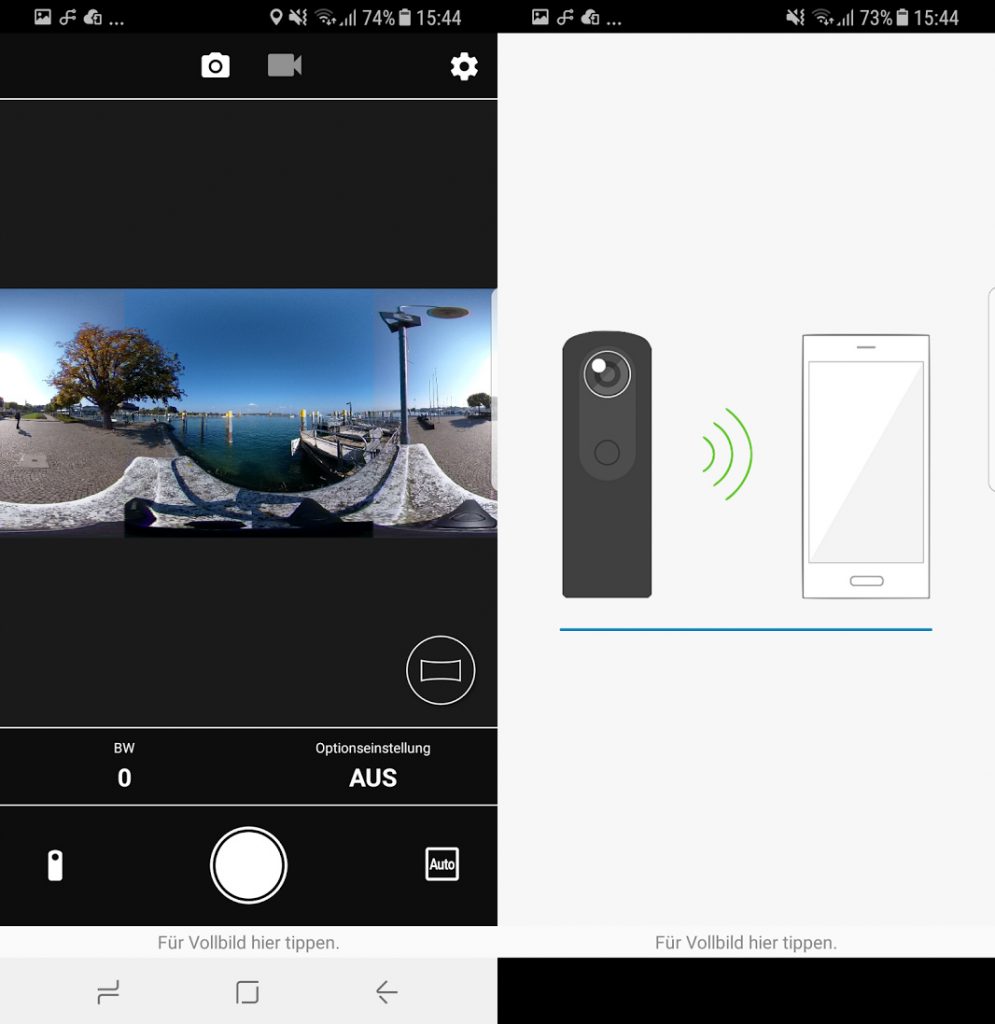
However, it is conceivable that according to the manufacturerthat the developers even supply their own plug-ins via an online store. For example, extensions such as Miracast for the TV would also be possible in order to stream 360-degree recordings directly to the TV. However, these are all features that are not yet available. However, it is again very easy to access all functions via numerous iOS and Android smartphones.
Restrictions during operation
The Ricoh successor can be operated as usual using the four buttons (mode, record, power and Wi-Fi). The app also offers functions such as continuous shooting after different exposures and variable selfie timers. However, the Ricoh Theta V has not become any more flexible. Spherical videos can be uploaded directly to YouTube via the app. However, if you want to post a photo on Facebook or Twitter, this is only possible via a link integration via Ricoh's own cloud platform, as was the case with the Theta S. To post a 360-degree image on Facebook, it is better to connect the camera to the PC using the micro USB cable supplied. Although the Ricoh Theta V also supports live streaming with the aid of PC software, unlike the new Gear 360 (2017) No 4K 360-degree support for Facebook Live yet. However, it is possible that a firmware update will be released at a later date.





